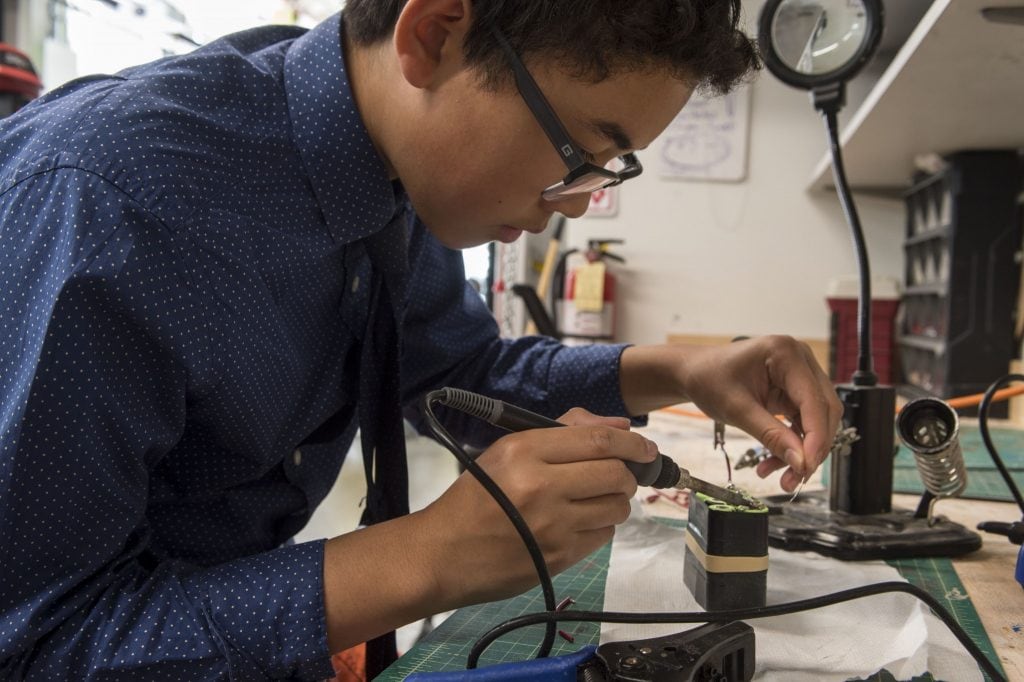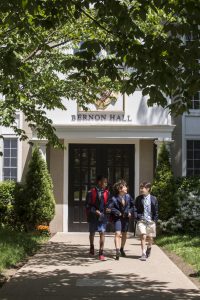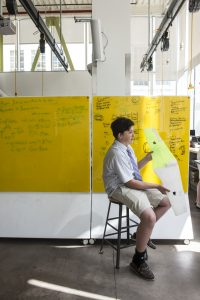
In a time of accelerated change in nearly every aspect of life, private schools often strive to deliver a program that blends tradition with innovation, simultaneously honoring the past and preparing students for the future. The terms “traditional” and “innovative” are seemingly paradoxical, so what does this actually mean? And how can you determine whether or not a school is doing it well?
The answer to these questions depends on the school, but there are a number of key things to consider if you are in search of a middle school for your child that makes good on its promise to offer the best of both worlds.
How Tradition Can Lead to Misperceptions
Private schools in the United States date back to the late 1700s. Today, centuries later, many take pride in the traditions that have shaped their respective institutions. But with the rich history and benefits of private schools, tradition isn’t always perceived in a positive way. The celebration of the past—particularly the stuffy and elitist stereotypes that can sometimes appear in the media and entertainment industries—often leads to misperceptions and stigmas that paint private schools with the same broad strokes. Rigid and austere are adjectives that may come to mind for those unfamiliar with private schools, for example. But while many schools do celebrate time-honored traditions, the educational landscape is drastically changing to adapt to an increasingly complex and unpredictable world.
What ‘Tradition’ Means to Us at Fessenden
 Honoring tradition means respecting the parts of a Fessenden education that stand the test of time. On the surface, characteristics inherent to our school—like our colors, Red & Gray—will always be important. We believe in the importance of teaching boys that hard work pays off. And, for a century we have taught young men to be honest, compassionate, and respectful.
Honoring tradition means respecting the parts of a Fessenden education that stand the test of time. On the surface, characteristics inherent to our school—like our colors, Red & Gray—will always be important. We believe in the importance of teaching boys that hard work pays off. And, for a century we have taught young men to be honest, compassionate, and respectful.
But we believe there are ways to honor tradition without holding on to academic philosophies that may become outdated over time. While our faculty are dedicated to providing the most effective educational experiences to our students, we also know that educational best practices evolve and that we must adapt to prepare students for their next steps. Today, we model grit, resiliency, and agility because we know how important those skills are and will continue to be in the future.
Why Has There Been a Push Toward Innovation in Private Schools?
Content and information is available to us at a moment’s notice. This is a vast departure from previous generations, and some schools and educators have been forced to grapple with what that means for a changing world and a shifting educational landscape. In recent years it has become glaringly obvious that a technology gap exists between generations; today’s students are digital natives, and they know how to access information in real time. The need to teach digital citizenship and help children navigate technology in a responsible, thoughtful, and compassionate way has never been greater. We feel it is important to not only introduce technology into a classroom, but to do it in a thoughtful way that increases what we call the six Cs (or core competencies) at Fessenden: critical thinking, communication, collaboration, creativity, character, and cross-cultural competency.
What ‘Innovation’ Means to a School
 There has been a recent push to incorporate what’s dubbed as “innovative” practices into educational programs. Things like makerspaces, an increase in the number of coding and robotics offerings, and the use of buzzwords—like “innovation” itself—have cropped up in the independent school landscape, and the speed at which this has occurred necessitates a close look at how and why schools are introducing these concepts.
There has been a recent push to incorporate what’s dubbed as “innovative” practices into educational programs. Things like makerspaces, an increase in the number of coding and robotics offerings, and the use of buzzwords—like “innovation” itself—have cropped up in the independent school landscape, and the speed at which this has occurred necessitates a close look at how and why schools are introducing these concepts.
The simple question prospective parents and students should ask themselves is, “Does the school integrate innovative practices into their school-wide academic program, or is it an added offering?” In other words, are critical 21st-century skills thoughtfully spread cohesively throughout a school’s curriculum, or does “innovation” appear separate through electives, stand-alone projects in a specific classroom or place on campus, and after-school activities? Is there a dedicated makerspace or innovation lab, and, if so, what kind of traffic does it see from classes throughout the school? Is it mostly math and science or do global languages and humanities utilize the space in creative ways?
How Innovation and Tradition Coexist at Fessenden
At Fessenden, we encourage students and teachers to work across departments and collaborate with others. Many of our teachers have been trained at the Buck Institute for Education (now called PBLWorks), an organization that focuses on professional development for teachers. Their belief, which is rooted in research, is that through PBL, “students engage in learning that is deep, long-lasting, and relevant to the challenges of their lives and the world they will inherit.” From our youngest learners to our students preparing to begin their secondary school journey, project-based learning is delivered throughout the School.
We continually find ways to push ourselves forward while simultaneously upholding our tradition and long-lasting commitment to educating boys in every aspect of their lives. We want our students to contribute positively to—and adapt along with—the quickly-evolving world in which they live.
You Tell Us.
If you are considering a private school for your child, do tradition and innovation come into play? What place, if any, does innovation have in a school curriculum, and what does successful implementation look like to you?




